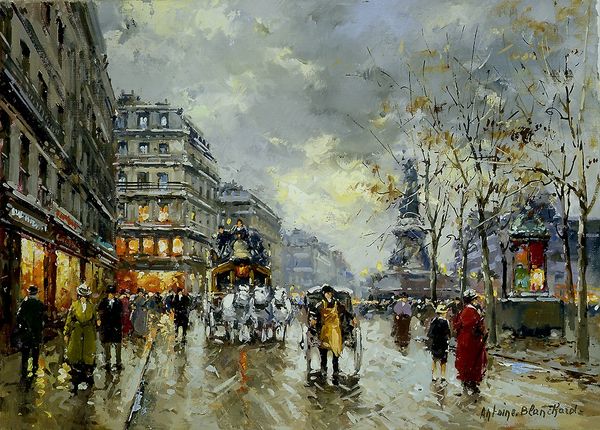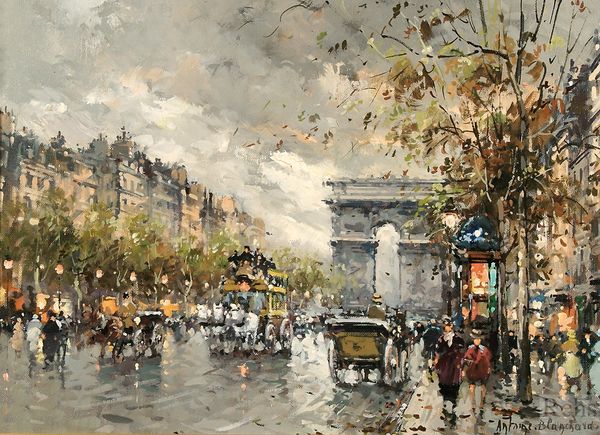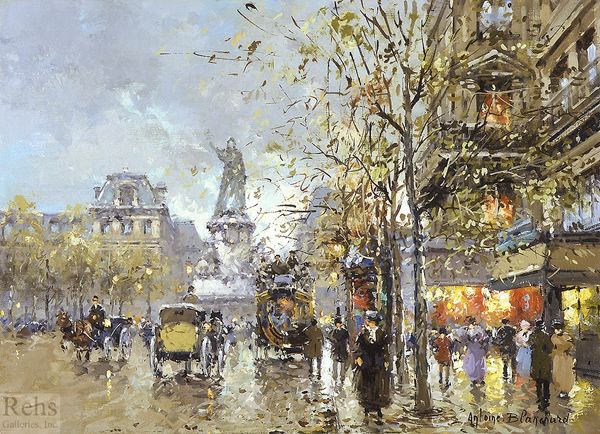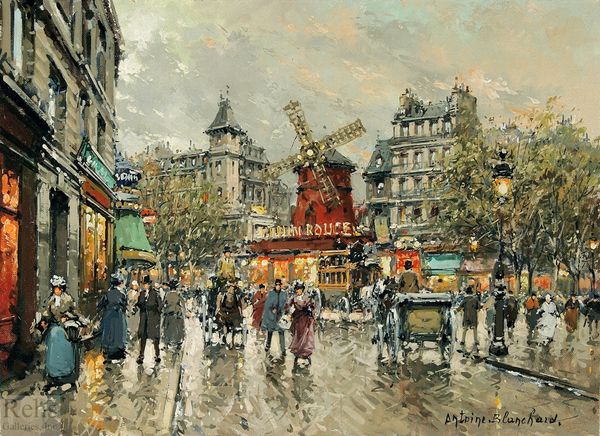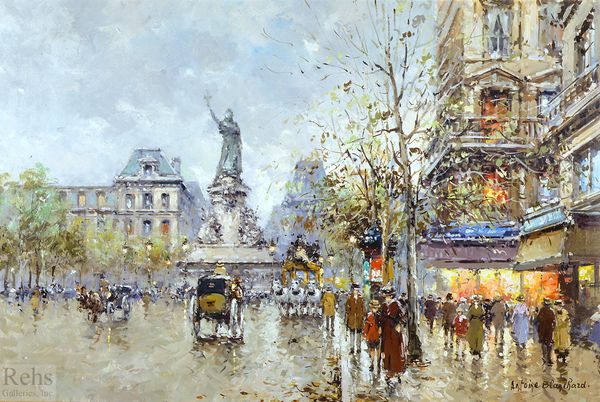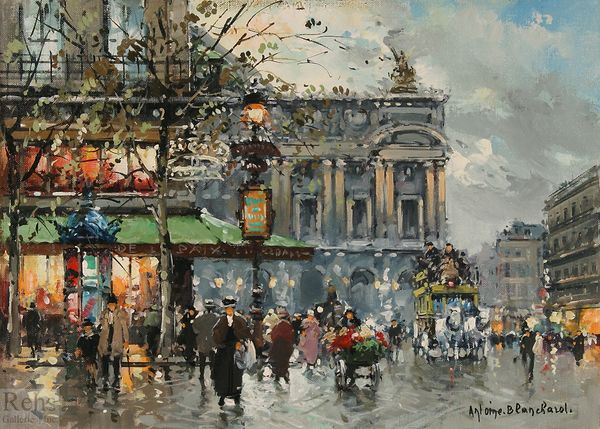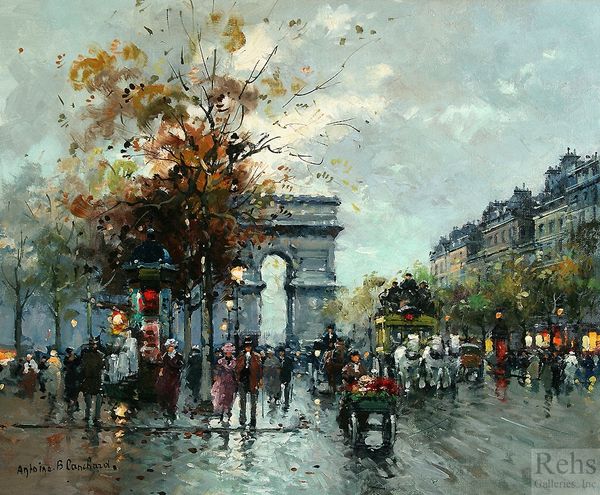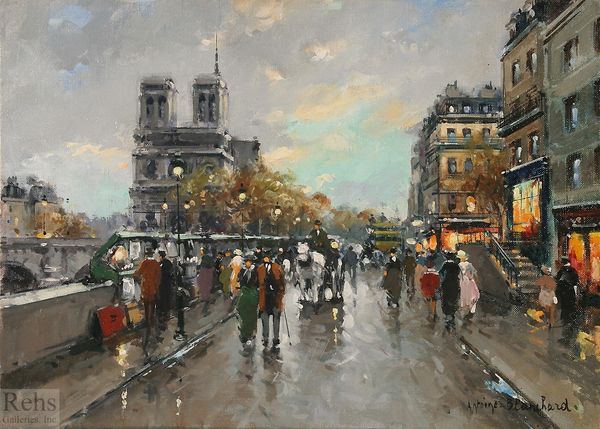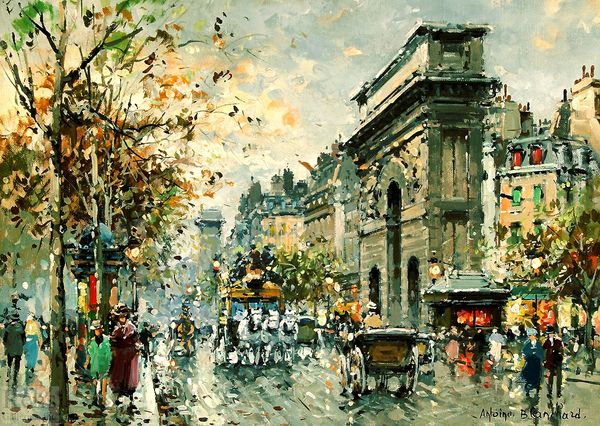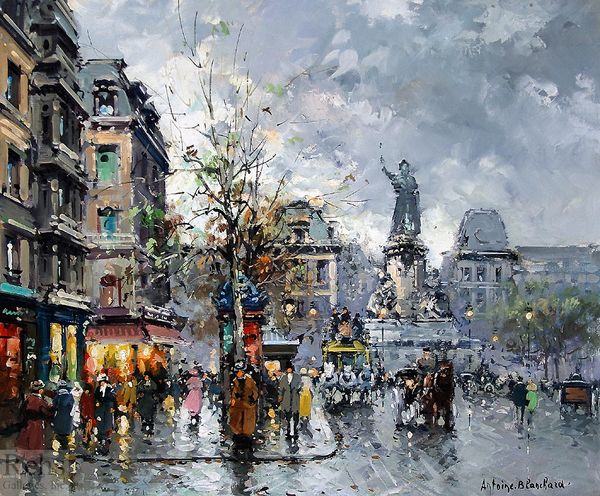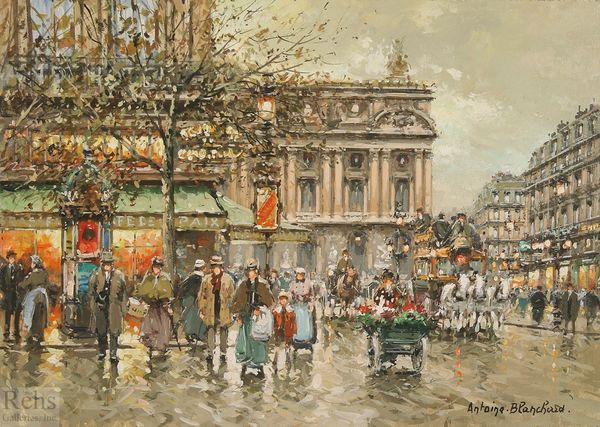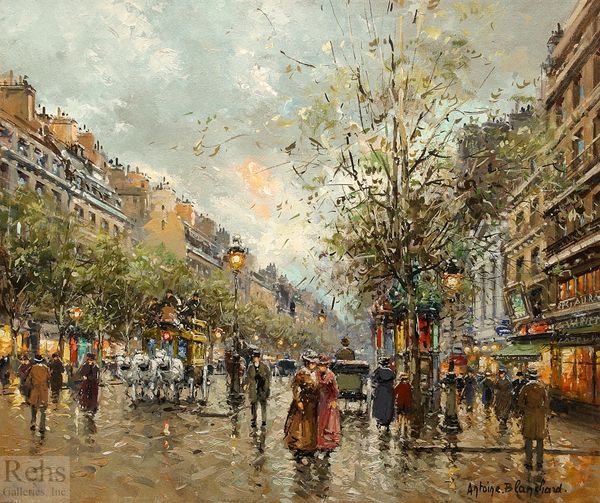
painting, oil-paint
#
urban landscape
#
baroque
#
painting
#
impressionism
#
oil-paint
#
landscape
#
oil painting
#
cityscape
Copyright: Antoine Blanchard,Fair Use
Curator: Antoine Blanchard’s oil painting, entitled “Place de la Republique,” immediately presents a captivating view. What are your initial thoughts? Editor: My immediate impression is a kind of melancholic beauty. The wet street reflects the light, blurring the figures and softening the grandeur of the architecture, which to me suggests a subtle commentary on fleeting moments amidst historical permanence and national values. Curator: Interesting observation. Let’s look closely at the composition. Blanchard's use of atmospheric perspective and impasto evokes a palpable sense of the urban environment. Note how the statue's verticality establishes a structural focal point, balanced by the horizontal flow of the street and buildings, and how the light filters through the trees. It seems like a visual exercise of space and scale to suggest Paris’s urban vitality. Editor: Yes, but within that "vitality" who do we see? The piece reflects a very specific societal view and access. Note how the blurred faces lack individuality and instead reinforce ideas about the emergent concept of the modern bourgeoisie urban experience. This contrasts with the powerful symbolism of the Republic’s statue that anchors the scene, thus creating a gendered dynamic between anonymous subjects and personified values that require investigation. Curator: You introduce compelling readings that bring socio-political aspects into dialogue with the scene’s inherent geometry, a good intersectional intervention. Considering the painting’s material qualities, how do the loose brushstrokes add value to this construction? Editor: For me, the loose strokes deconstruct conventional portrayals of public spaces to subtly emphasize their impermanence. While representing modern society as free-moving crowds with implied access to its urban wonders, it begs critical engagement to question the exclusions inherent within its painted gestures. Curator: A fitting analysis considering the dialogue, let’s recap: While one could focus on brushstrokes and architectural constructs, others are pushed to interpret it to reveal overlooked voices within seemingly universal narratives. Editor: Absolutely. This work opens possibilities for dialogue about art's dual function as artifact and societal signifier.
Comments
No comments
Be the first to comment and join the conversation on the ultimate creative platform.
